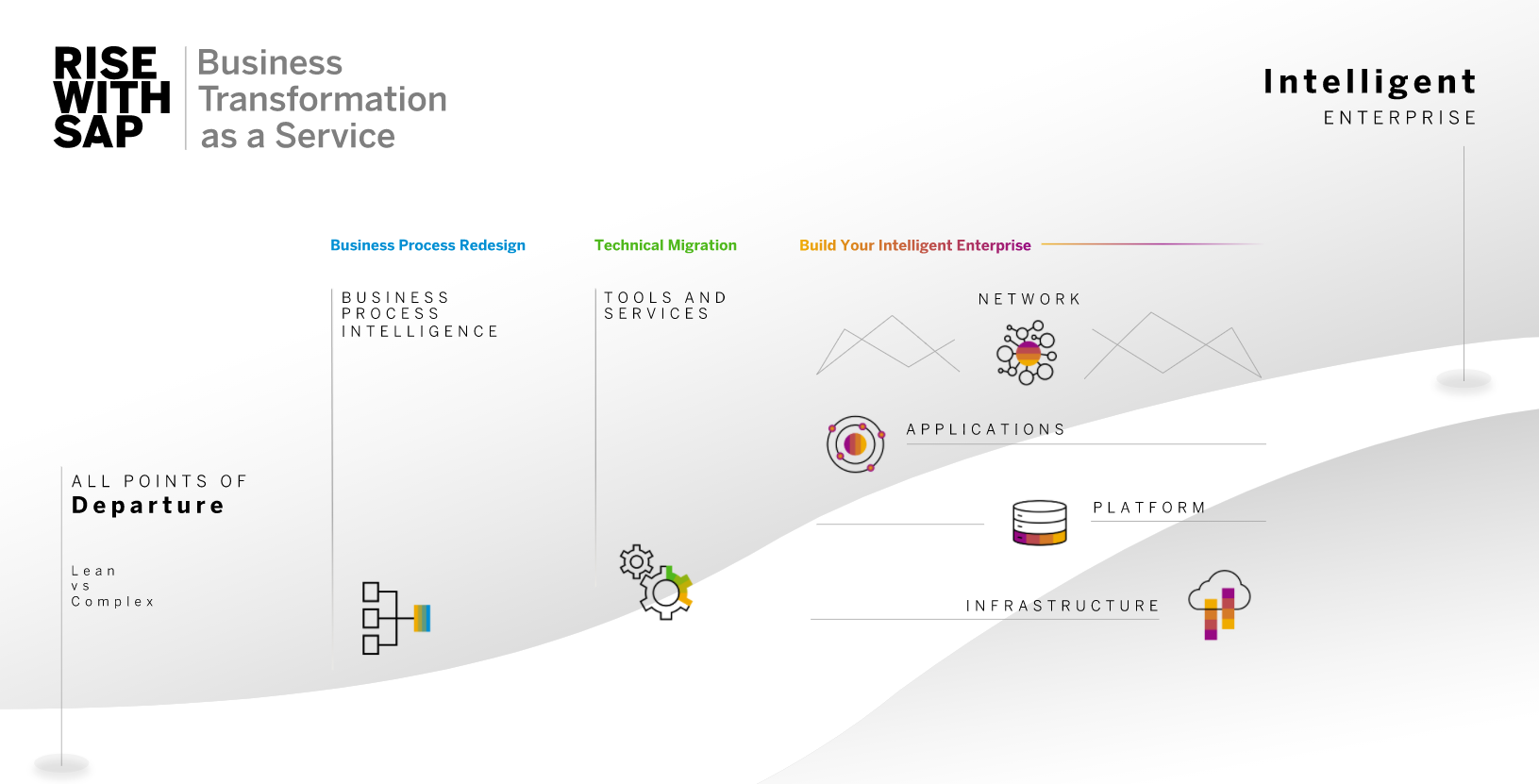 CLOUD
CLOUD
 CLOUD
CLOUD
 CLOUD
CLOUD
German software giant SAP SE announced today a new concierge offering for enterprises that it’s calling “RISE with SAP.”
The new offering is labeled as “Business transformation-as-a-Service” and is aimed at guiding SAP’s customers through their digital transformation as they evolve to become more “intelligent enterprises,” the company said.
In addition, SAP said it’s buying a Berlin-based company that specializes in business process intelligence, called Siganvio GmbH.
In a livestreamed announcement, SAP Chief Executive Christian Klein explained that business transformation is no longer an option, but a necessity, for every enterprise. The RISE with SAP program is meant to help companies along the way, providing a “single handshake” for dealing with SAP. “Transforming into an intelligent enterprise has never been more important,” Klein said.
The RISE with SAP offering is a single subscription service that SAP said will enable customers to build a more intelligent enterprise in a way that suits their specific needs and requirements. The agreement entails SAP taking responsibility of all contracts, service level agreements, operations and support, bundling it all into a single contract.
Sven Denecken, chief operating officer of S/4HANA and head of product success at SAP, said the new offering would be a “game-changer” for enterprises. He explained that RISE with SAP aims to consolidate multiple contracts and put customers onto a subscription model that includes more than just technology. It means SAP will take over many functions that customers would have previously offloaded to systems integrators and partners.
Notably, RISE with SAP appears to be the first concrete step in SAP’s bid to move its customer base to a cloud and subscription-based business model.
RISE with SAP comprises three steps for companies to achieve digital transformation. First is business process redesign, which involves continually analyzing customer’s business processes and benchmarking these against industry standards and adapting them to new business requirements when necessary.
Second is technical migration, which involves using embedded services from SAP and its partners to transition customer’s application landscapes. This will involve things such as eliminating modifications and custom code and harmonizing and governing data, SAP said. Customers will be able to run their systems on a single data layer and with a single source of truth.
The third step is building the intelligent enterprise, and SAP wants customers to use the SAP Business Technology Platform as the foundation of this. It will mean customers can run integrated business processes that share a single semantic data model across their entire organization.
SAP said multiple partners are involved with the RISE with SAP effort, including public cloud infrastructure platforms such as Amazon Web Services, Google Cloud, Microsoft Azure and Alibaba Cloud. But RISE with SAP will abstract this infrastructure so customers can focus solely on their business. In effect, SAP will manage all of the technology and moving parts in the background so customers don’t have to.
“We are going to offer new technologies and understand new ways to run the business and deliver data to value,” Denecken said. “Business transformation will be different by client but we will support them through transformation that is constant.”
SAP said that more than 100 of its customers are already operating under the RISE with SAP model so far.
SAP’s acquisition of Signavio ties into RISE with SAP, since that company offers special capabilities that will help with the first step of business process redesign. Signavio sells a cloud-native business process intelligence and process management tools that SAP said will be integrated with its Business Process Intelligence.
With the addition of Signavio, SAP said, it can now provide a “holistic suite of flexible process transformation solutions,” including business process design, benchmarking, gap analysis, improvement and process change management. The suite will also allow customers to monitor the long-run success of the process changes, the company added.
SAP didn’t say how much it paid to acquire Signavio, but Bloomberg reported before the deal was confirmed that it could be worth as much as $1.2 billion.
Constellation Research Inc. analyst Holger Mueller said SAP is trying to solve a long-standing uptake problem with its enterprise resource planning suite, S/4HANA, by sweetening the deal to get enterprises to move onto it. He said the idea of Business transformation-as-a-Service is a nice vision because enterprises are keen to move faster and become more agile.
“The acquisition of Signavio beefs up SAP’s capabilities in process mining, where it has partnered with Celonis so far. It’s important because the key technology for company executives to figure out what is what is really happening in their enterprises,” Mueller said.
SAP has also done well to rally its partner ecosystem too, as migrations are big business for those partners, Mueller said.
“The good news is, SAP is ultimately right in that business automation needs to happen in the public cloud,” he added. “But only the future will tell if SAP has managed to put an attractive enough package together.”
Support our mission to keep content open and free by engaging with theCUBE community. Join theCUBE’s Alumni Trust Network, where technology leaders connect, share intelligence and create opportunities.
Founded by tech visionaries John Furrier and Dave Vellante, SiliconANGLE Media has built a dynamic ecosystem of industry-leading digital media brands that reach 15+ million elite tech professionals. Our new proprietary theCUBE AI Video Cloud is breaking ground in audience interaction, leveraging theCUBEai.com neural network to help technology companies make data-driven decisions and stay at the forefront of industry conversations.